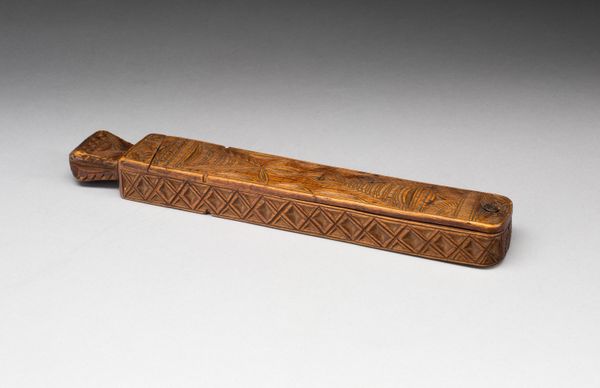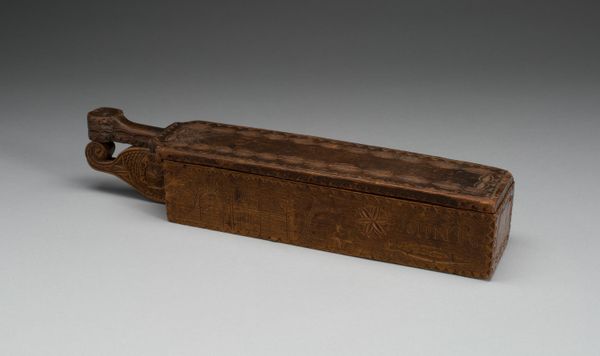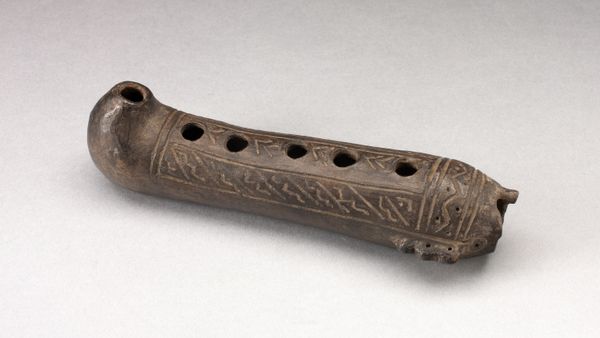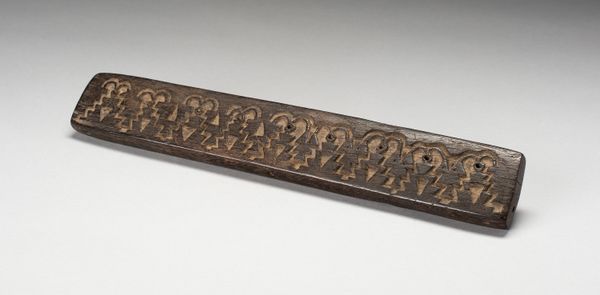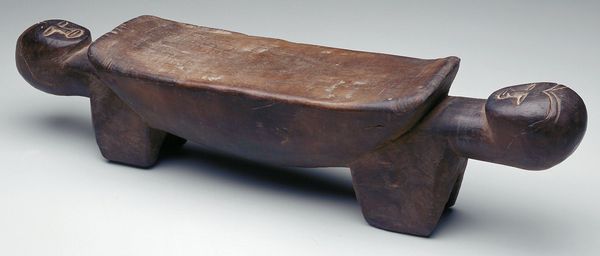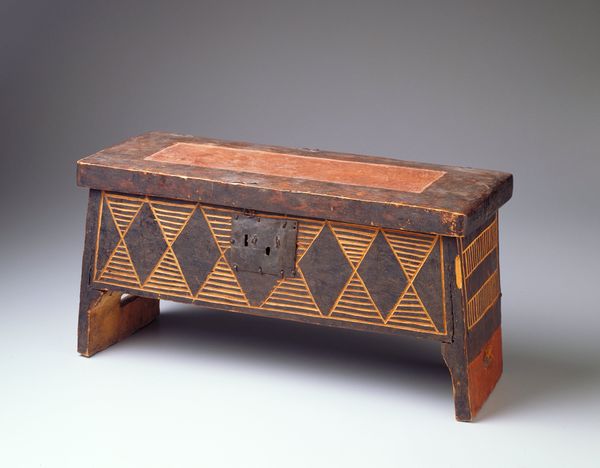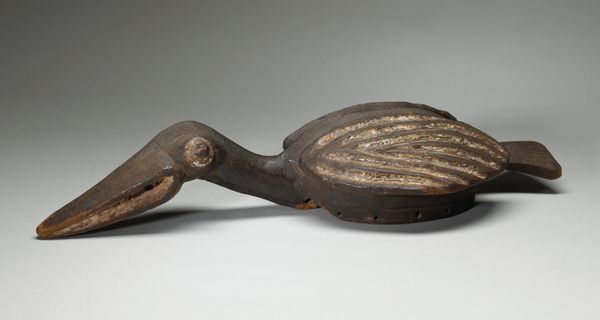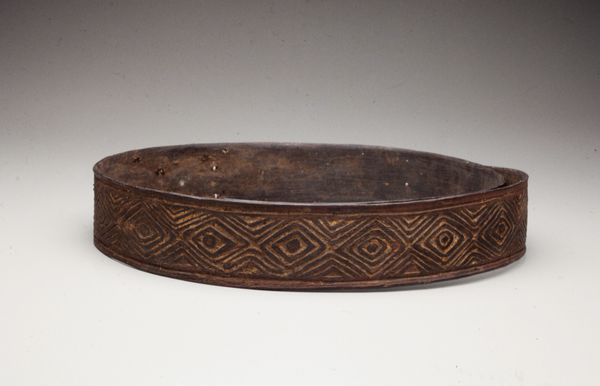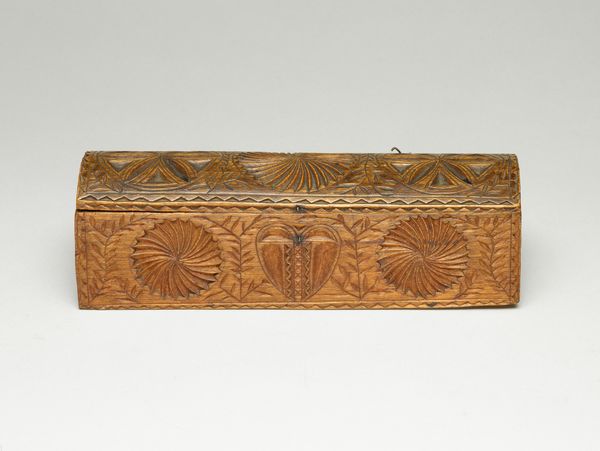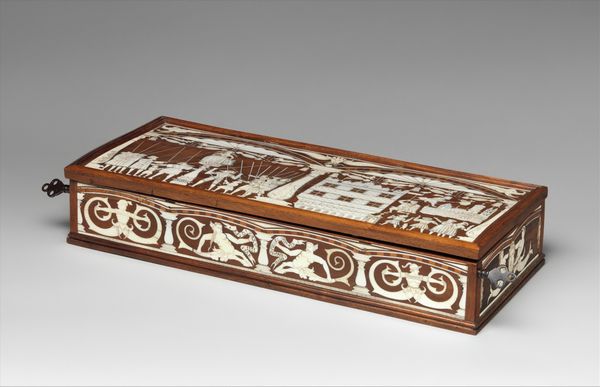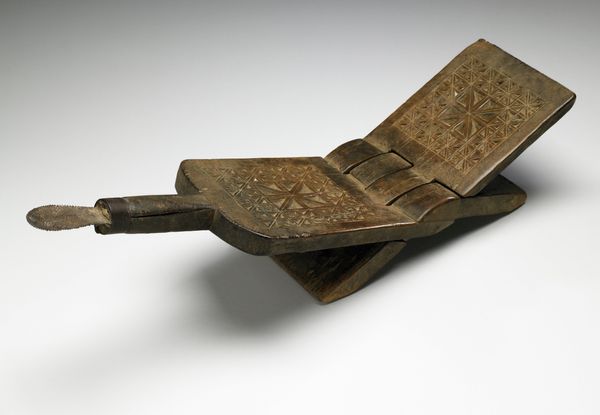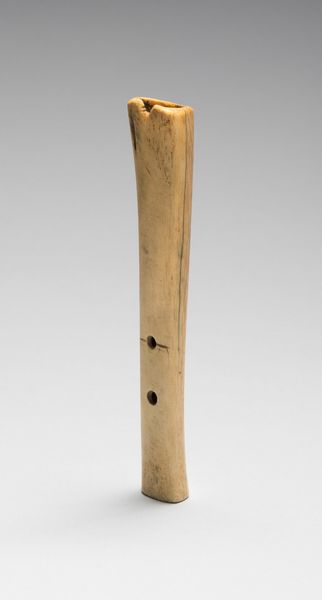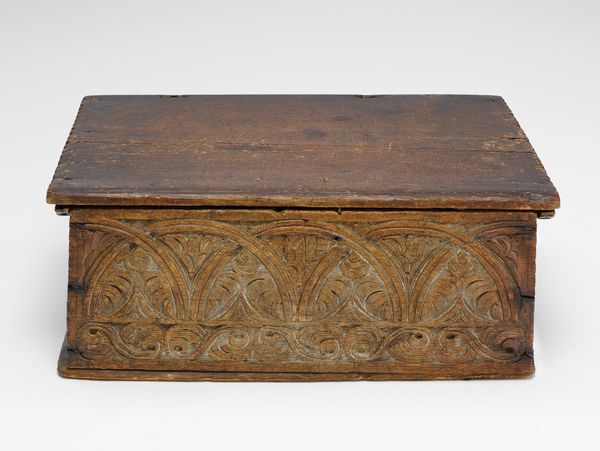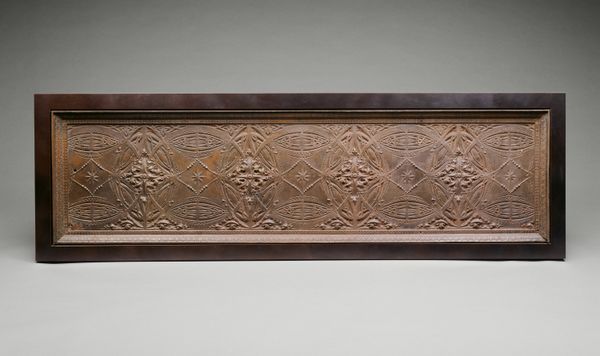
carving, wood
#
carving
#
folk-art
#
wood
#
decorative-art
Dimensions: 6.3 × 26.3 × 5 cm (2 1/2 × 10 3/8 × 2 in.)
Copyright: Public Domain
Curator: Editor: Standing here looking at this small, wooden "Box", made sometime between 1750 and 1850 by an anonymous artist and residing at The Art Institute of Chicago, I'm immediately drawn to the intricate carving. It feels… artisanal, perhaps a bit rough, but the patterns are so deliberate. How do you interpret this work? Curator: The carving on this box really highlights a fascinating intersection of labor, material, and social context. The type of wood used, the tools needed for that carving - these aren’t arbitrary choices, are they? These all tell a story of available resources, local traditions, and perhaps even the maker's social standing and skill. Does this feel like something "high art" patrons were consuming? Editor: Well, not exactly. It’s in the style of decorative art, and the theme is folk-art, so to me that speaks more of practical use and possibly familial or local significance. But isn't the label of "folk art" also about the context of reception – what and who does this separate from more esteemed decorative art or even craftwork? Curator: Precisely. "Folk art" often implies a separation from formally trained artists and industrial production, though craft objects often circulate among various levels of social class. But isn't it interesting that the box form is inherently functional, meant for containing something? What do you suppose was valued highly enough to warrant such careful, detailed labor? Perhaps spices, jewelry, letters? Editor: That’s true; I was so focused on the surface I neglected to think about the *use* of this carved creation. Thinking of the time period and potential contents makes me think about trade routes, material access, maybe even coded messages for political organization. I guess I need to examine this as a container of meaning in all ways, rather than just a pretty object. Curator: Yes. Ultimately, a materialist approach reminds us to see art objects as products of a complex network, a set of relationships. Thinking about how it’s created, what it's made of, and the cultural framework surrounding both can reveal so much more about this simple box. Editor: I definitely see that now. Thank you. I had completely neglected how materiality and making play a pivotal role in what seems at first to be only pretty decoration.
Comments
No comments
Be the first to comment and join the conversation on the ultimate creative platform.
